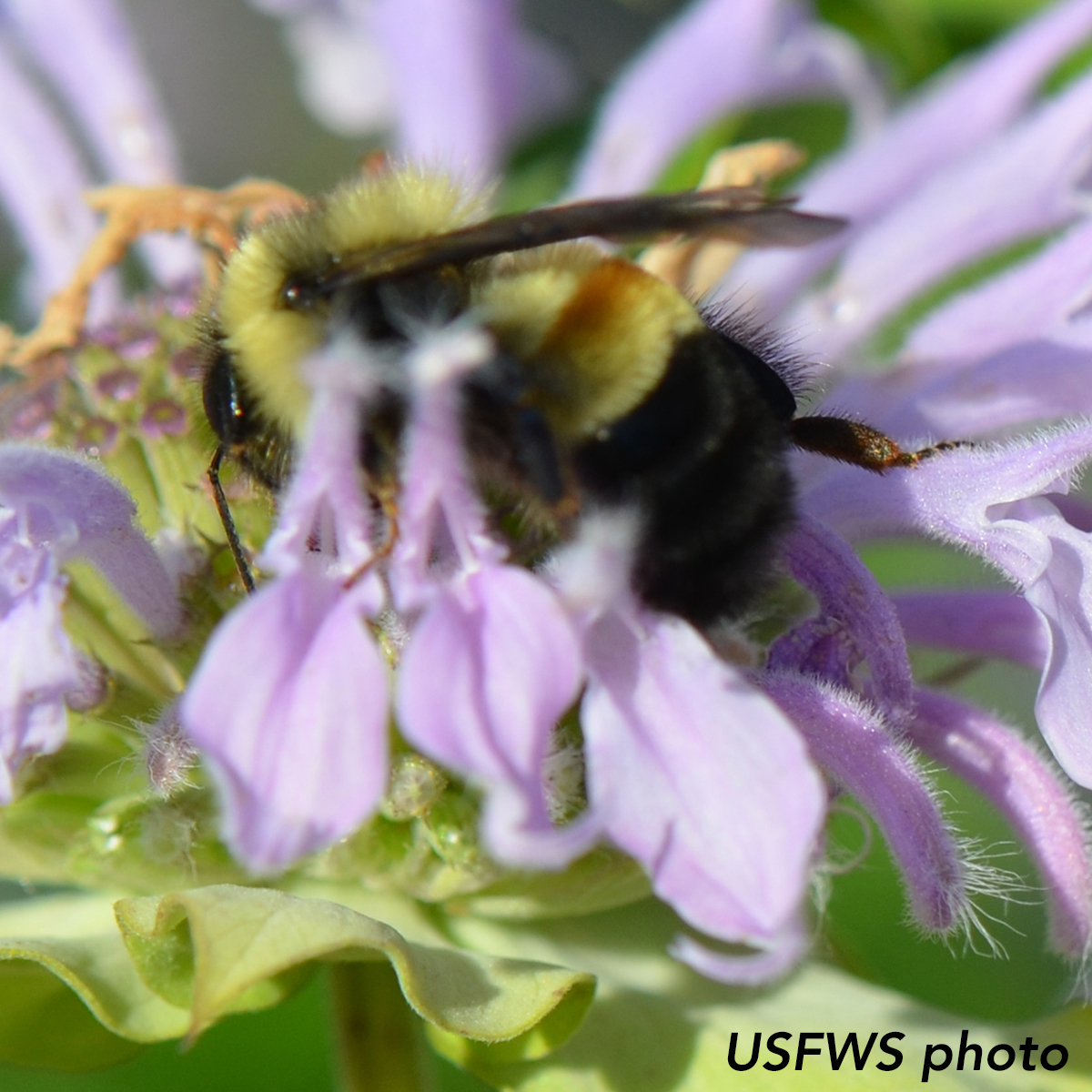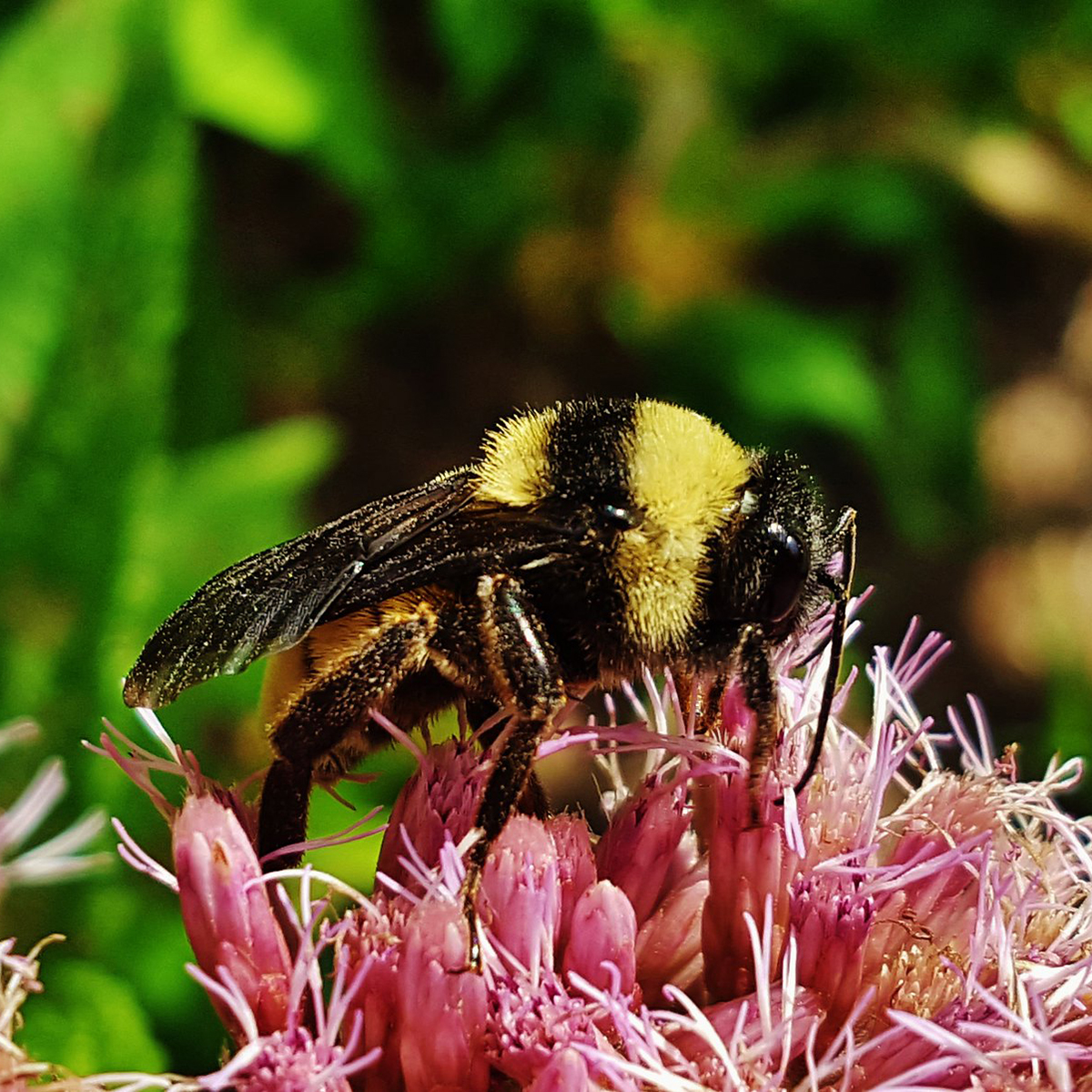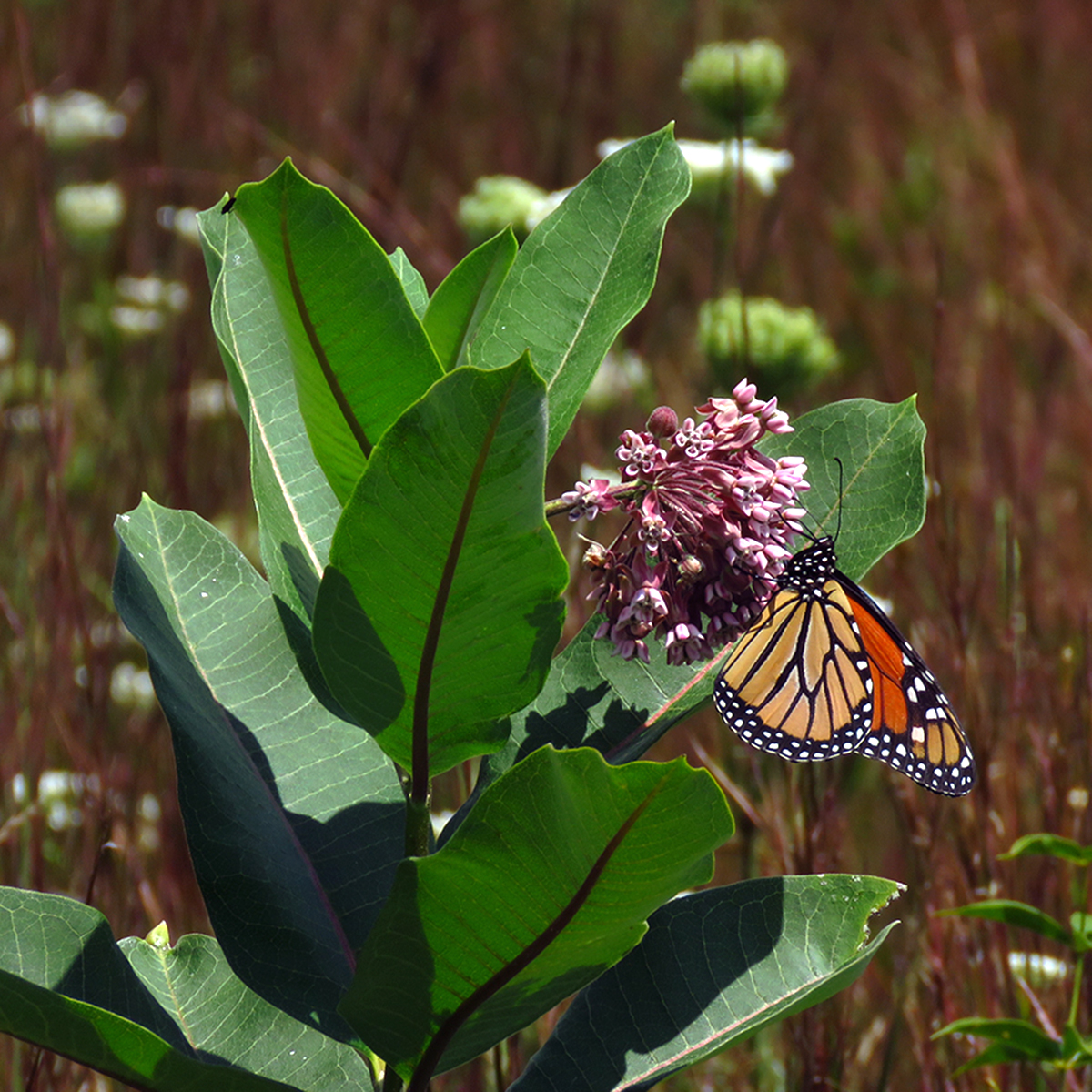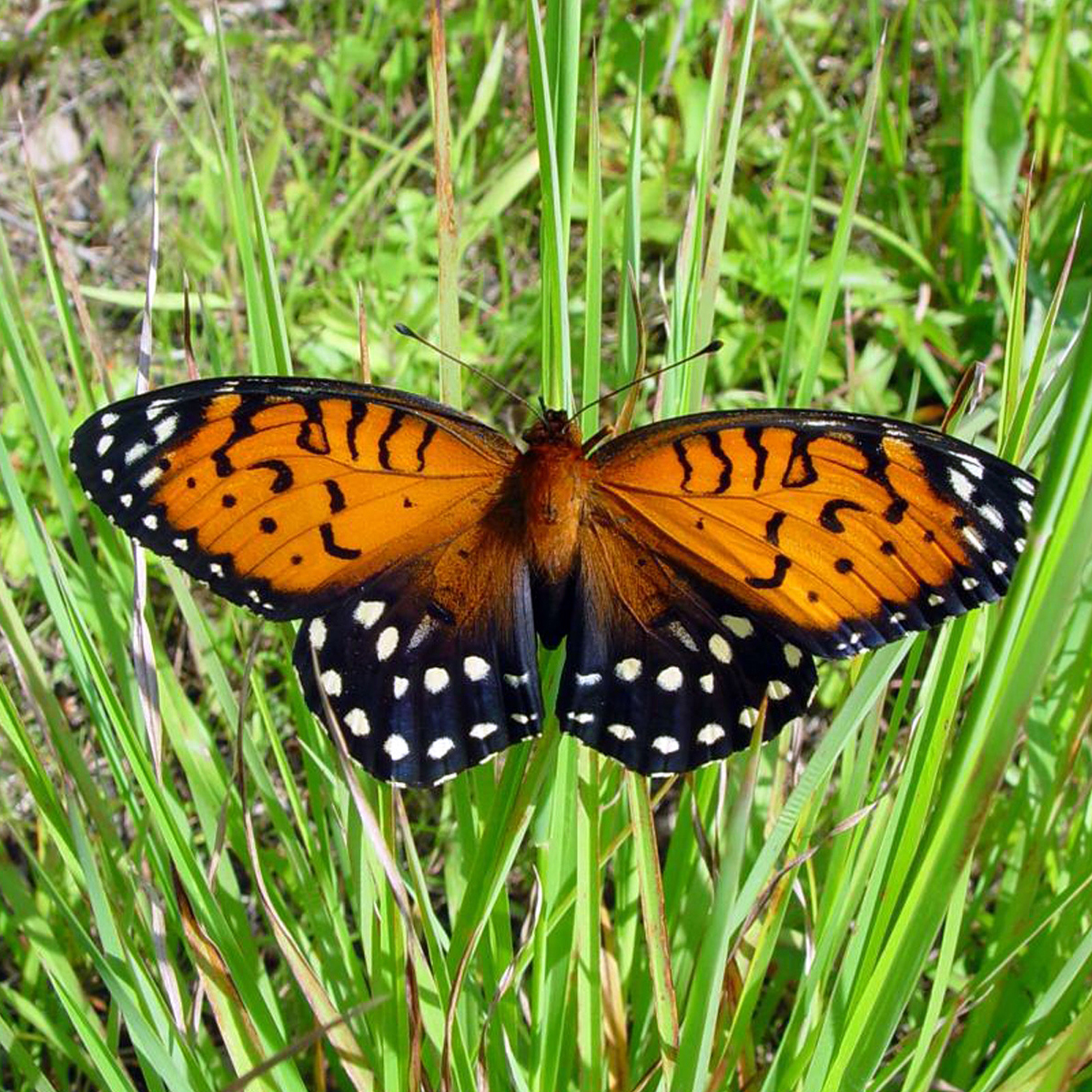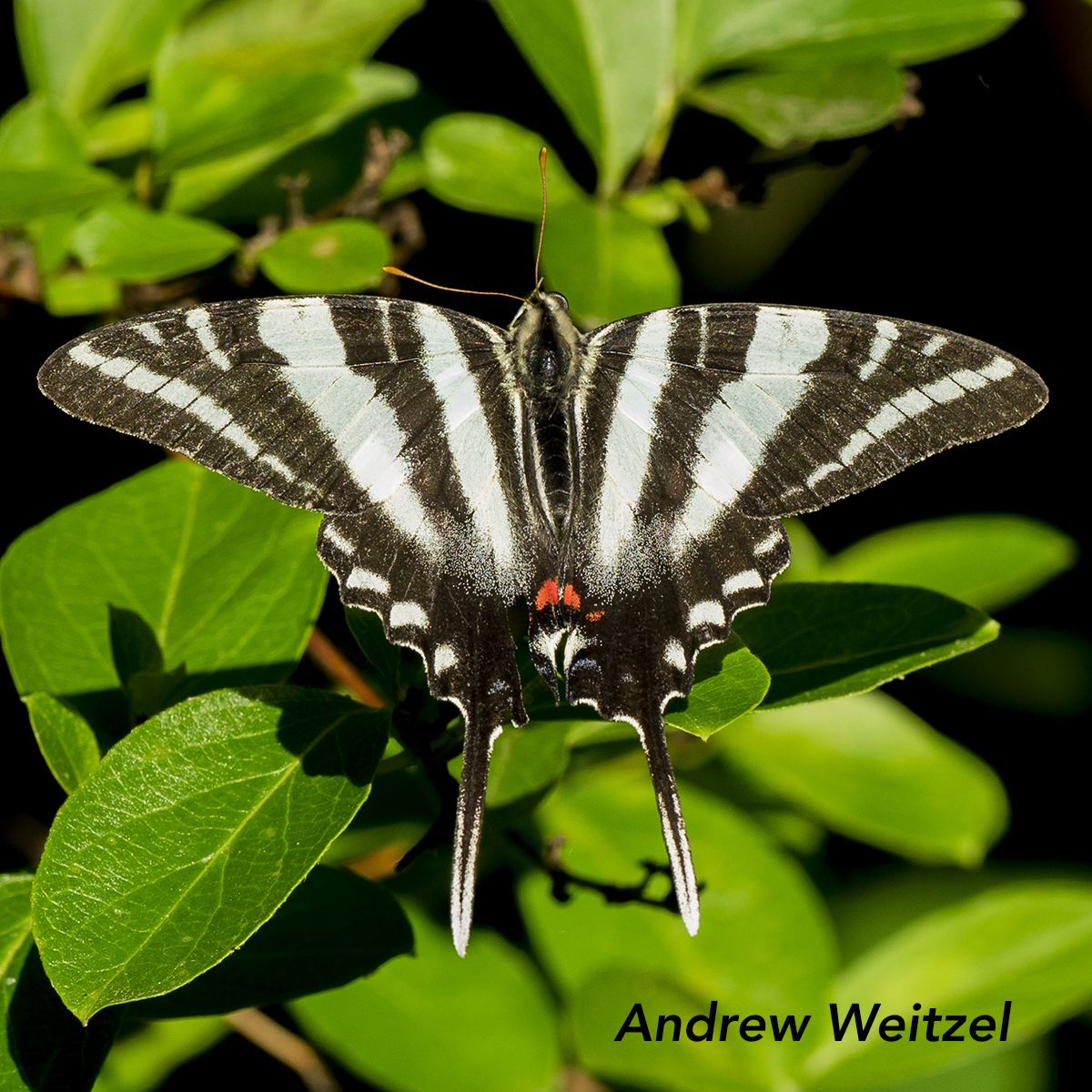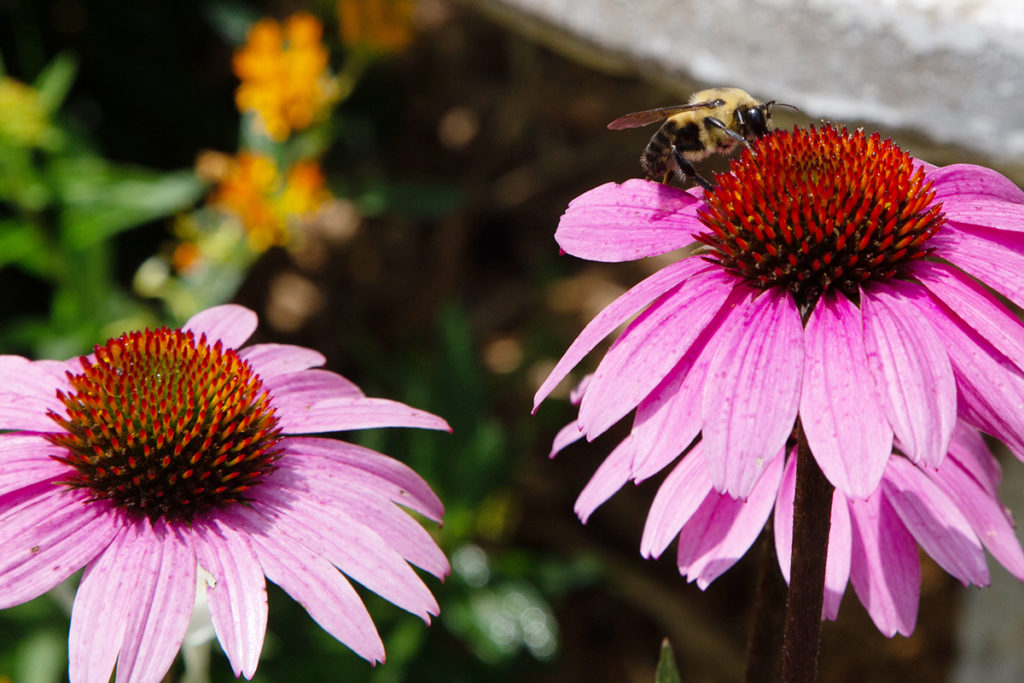Meet our Pollinators in Need
by Watersheds and Wildlife Coordinator David Stein
As we’ve started to intensify our pollinator program, I’ve been asked the same question from several people, “which pollinators should we be protecting?” The easiest (and least informative) answer is all of them, but that just opens up more questions about what’s out there. In Iowa, there are over 100 species of butterflies, and over 400 species of bees, so trying to explain what each one of them looks like, what each one eats, and each habitat, gets tedious fast. On top of this, 66 species of pollinators are listed as Endangered, Threatened, or of Greatest Conservation Need in Iowa. This might narrow down the number a bit, but again, each of them has different needs, behaviors, and are even located in different areas of the state. To end all of this confusion, and to put an end to the massive lists, I settled on a primary list of Prairie Rivers’ pollinators in need. This list has been narrowed down to 5 species. Each was chosen by their habitat, so when combined, all five species represent all habitat types in Central Iowa. So without further ado, meet our pollinators in need:
- Rusty Patched Bumble Bee (Bombus affinis); Critically Endangered in the US
This is a special bee for us in Central Iowa, not only is it the only endangered bee in the contiguous 48 states, the edge of its range is in Boone County. Once you cross the Des Moines River westward, you won’t see them. The rusty patched bumble bee relies on riparian areas for its habitat, seeking out flower-rich patches in riverside environments. Over the last few decades, this bee’s range has fallen from much of the eastern United States to only a few pockets of Minnesota, Wisconsin, Illinois, and Iowa. The main threats that this bee faces are a lack of suitable habitat with flowers blooming from early spring to late fall and pesticides from nearby farms.
- American Bumble Bee (Bombus pensylvanicus); Threatened in Iowa
The American Bumble Bee is one of the largest bees in Iowa and is found throughout the state. These bees rely on flower-rich grasslands and savannas for their habitat and will nest in bundles of tall grasses or underground in old burrows. Recently this species has seen a dramatic decline in its population, falling by over 50% here in Iowa. Like the Rusty Patched Bumble Bee, the main threats that this bee faces are a lack of suitable habitat with flowers blooming from early spring to late fall and pesticides from nearby farms.
- Monarch (Danaus plexippus); Species of Greatest Conservation Need in Iowa
The Monarch is probably the most well-known butterfly in Iowa and the US as a whole. This butterfly is famous for its yearly migration from the Central and Eastern US to Mexico. As a butterfly, the caterpillars rely on a specific plant for its food and shelter as it matures into a butterfly. The monarch’s plant of choice is milkweed. As such, this species relies on habitat rich in milkweed including prairies, savannas, wetlands, and forest edges. The status of this species is usually measured by the amount of post-migration adults found in their breeding grounds in Mexico. Since the 90’s the overall monarch population has been declining at an alarming rate. Monarchs are faced with a variety of threats, but the main threats in Iowa are the loss of milkweeds due to intensifying agriculture, pesticides, and climate change.
- Regal Fritillary (Speyeria idalia); Endangered in Iowa
The Regal Fritillary is a large and striking butterfly, with a unique set of markings that make it distinct from other Midwestern butterfly species. Like with the monarch, the regal fritillary relies on one kind of plant to feed and shelter its young. The regal fritillary’s host plant is the prairie violet. As such, this species relies on high-quality tallgrass prairies, capable of supporting prairie violets, for its habitat. This species is tied so closely to Iowa’s tallgrass prairies that it was once in the running to be Iowa’s state butterfly. As with most of our other pollinators, the regal fritillary’s main threat is a lack of available habitat rich in prairie violets and other native flowers.
- Zebra Swallowtail (Eurytides marcellus); Critically Endangered in Iowa
The Zebra Swallowtail is an incredibly unique and almost tropical-looking butterfly that can be found in Central and Southern Iowa. Like with the regal fritillary and monarch, the zebra swallowtail relies on one plant to feed and shelter its young. The zebra swallowtail’s host plant is the pawpaw, another species of concern in Iowa. As such, this species relies on high-quality forests that support pawpaw trees. That being said, the main threat that zebra swallowtails face is the lack of and loss of available habitat that can host pawpaw trees.
How can you help out Pollinators in Need?
In town: Consider expanding your gardens by removing unused areas of turf grass. Plant native plants in your gardens, especially species that will bloom between April and October. Leave garden waste like fallen leaves and branches as winter shelter until May. Reduce your use of insecticides on your gardens and lawns.
On the farm: Remove less productive land from production, and replace it with native pollinator-friendly habitat. Reduce the overall use of agrochemicals, especially insecticides and fungicides. Practice Integrated Pest Management around any pieces of pollinator habitat on your farm. Practice reduced tilling and plant cover crops. Call Prairie Rivers of Iowa or your local NRCS/FSA service center to discuss financial programs that can pay for pollinator conservation practices.

